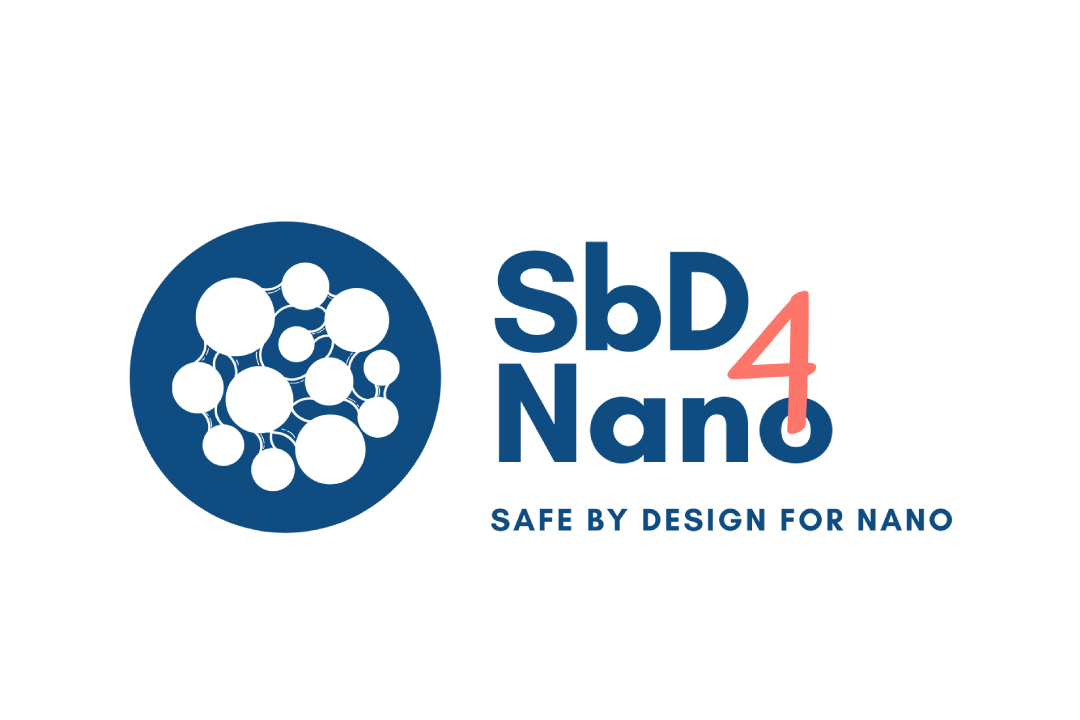SBD4NANO: Computing infrastructure for the definition, performance testing and implementation of safe-by-design approaches in nanotechnology supply chains

The SBD4NANO project, funded by the Horizon 2020 programme of the European Union, aims to develop mathematical models integrated within an “e-infrastructure” software platform for the identification, design and implementation of strategies for the design of safe-by-design nanomaterials, nanoproducts and processes (Safe-by-Design).
Context
One of the main challenges in the global nanotechnology sector is the development of functional and safe nanomaterials, as well as manufactured nanomaterials (ENMs) and nanostructured products (NEPs).
Nanomaterials are materials in the size range between 1 and 100 nm (1 nm = 10-9 m), whose incorporation in products such as cosmetics, plastics, cements, paints or medical devices allows new or improved properties to be obtained. Applications in the packaging sector are of particular interest, representing up to 20% of nanotechnology applications (Global Market Insights, 2018), and allow smart packaging materials, active against pathogens or with greater durability to be obtained.
In this scenario, the application of the Safe-by-Design (SbD) concept – or “safety by design” – seeks to mitigate potential risks to human health and the environment from the use of nanomaterials by applying safety and prevention measures during the design phase of a facility, process, material or product.
The application of BDS when dealing with ENMs is still at a very early stage due to the lack of comprehensive data on product performance, hazard or exposure potential of nanomaterials with different shapes, sizes, chemical structure and surface or types of coatings and/or functionalisations. Furthermore, the application of this concept requires a proper understanding of the effects of nanospecific physicochemical properties – such as size, shape or surface chemistry – on the hazard potential and intended functionality once incorporated into finished products, as well as an in-depth analysis of the relationships between exposure potential, the characteristics of NMs or NEPs and their use processes (scenarios), taking into account that safety is considered as the reciprocal of risk, which is a measure of the probability of harm occurring under defined exposure conditions.
Despite current efforts to implement the SbD concept, there are a number of barriers that need to be overcome:
– Improving information exchange between stakeholders involved in the nanotechnology supply chain to define design strategies with the right balance between cost, safety and function.
– The development of a robust knowledge base to generate and apply design rules to make a material as safe as possible while satisfying the purposes for which it was created, and the application of robust and user-friendly tools to transfer this knowledge in a structured way to industrial innovation processes.
It must also be ensured that the risks of products brought to market are known, managed and, where possible, reduced.
SBD4NANO will address all these current challenges regarding the application and implementation of BDS, working on the development and validation of new approaches and tools to ensure the safety of processes and products, considering the entire life cycle of nanomaterials and nanoproducts, from the design of the material itself to the implementation of process improvements to adequately control risks. All this focusing on industrial sectors such as coatings, cosmetics, pharmaceutical and healthcare technology and structural and functional nanomaterials.
Summary and objectives
The main objective of the SBD4NANO project is the development of mathematical models integrated within an e-infrastructure software platform for the identification, design and implementation of strategies for the design of safe-by-design nanomaterials, nanoproducts and processes.
From this main goal, the project has a number of specific objectives:
- Development and validation of a tool based on structure-activity relationship models (nanoQSAR) for the prediction of the toxicological profile of nanomaterials as a function of their structure and surface chemistry.
- Development and validation of a tool based on new mathematical models designed to calculate the exposure potential as a function of nanoparticle emission rates and the effectiveness of control measures implemented in the workplace.
- Development and validation of strategies for surface and structural functionalisation of nanomaterials to reduce toxicity in cells and target organisms.
- Development and validation of new algorithms for the calculation of cost-benefit ratios of the toxicity reduction and exposure control strategies selected by the user of the e-infrastructure.
- Development of the “e-infrastructure” software platform where the models and algorithms developed in the project will be integrated with databases and support tools for risk management and assessment developed in the framework of the European Nanosafety Cluster.
Consortium
The SBD4NANO project brings together 23 partners from 11 European countries including four universities, six research centres, one large company, twelve SMEs, one institution and one association.
1. Packaging, Transport and Logistics Research Centre a -ITENE (Spain).
2. Sabanci University Nanotechnology Research and Application Center -SONUM (Turkey).
3. Commissariat à L’énergie Atomique Et Aux Énergies Alternatives-CEA (Francia).
4. Thinkworks BV (Netherlands).
5. International Iberian Nanotechnology Lab. (Portugal).
6. Nederlandse Organisatie Voor Toegepast-Natuurwetenschappelijk Onderzoek (Netherlands).
7. ART-ER – Societa Consortile per Azioni (Italy).
8. BioNanoNet Forschungsgesellschaft mbH (Austria).
9. Yordas GmbH (Germany).
10. Grupo Antolin-Ingeniería SA (Spain).
11. Avanzare Innovación Tecnológica SL (Spain).
12. HiQ-Nano SRL (Italy).
13. Nanovector SRL (Italy).
14. Applynano Solutions (Spain).
15. AcZon SRL (Italy).
16. Ideaconsult Limited Liability Company-IDEA (Belgium).
17. Creative Nano PC –(Cnano (Greece).
18. Universitat Rovira iVirgili (Spain)
19. Ambrosialab SRL (Italy).
20. Laurentia Technologies (Spain).
21. ControlNano Technologies (Spain).
22. Maastricht University (Netherlands).
23. Institute of Occupational Medicine-IOM (United Kingdom).
24. National Institute for Occupational Safety and Health (USA).
25. Hong Kong University of Science and Technology (China).
ITENE´s role in SDB4NANO
The SBD4NANO project is divided into 8 work packages (WP) and ITENE will act as project coordinator. It will also develop the following tasks:
- In vitro ecotoxicological studies for the validation of the effectiveness of functionalisation strategies and structural modification of 12 (nanometre) NMs.
- Development of algorithms for the prediction of nanoparticle release rates as a function of physicochemical parameters and process variables.
- Evaluation of exposure to nanomaterials in 12 case studies.
- Evaluation of the effectiveness of protective equipment and development of a mathematical model for its theoretical determination.
- Networking actions with members of the US nanosafety strategy.
These actions are intended to achieve the following results:
- A new model for estimating the effectiveness of means of protection based on the integration of the ECEL library of efficiencies and a new fluid dynamics model.
- Implementation of hazard, exposure, benefit and cost calculation algorithms based on experimental observations.
- Creation of new safe-by-design materials.
- Creation and implementation of the SBD4NANO (e-infrastructure) platform for the guided selection of safe design techniques.
- Generation of guidelines for the implementation of safe-by-design strategies in companies.

